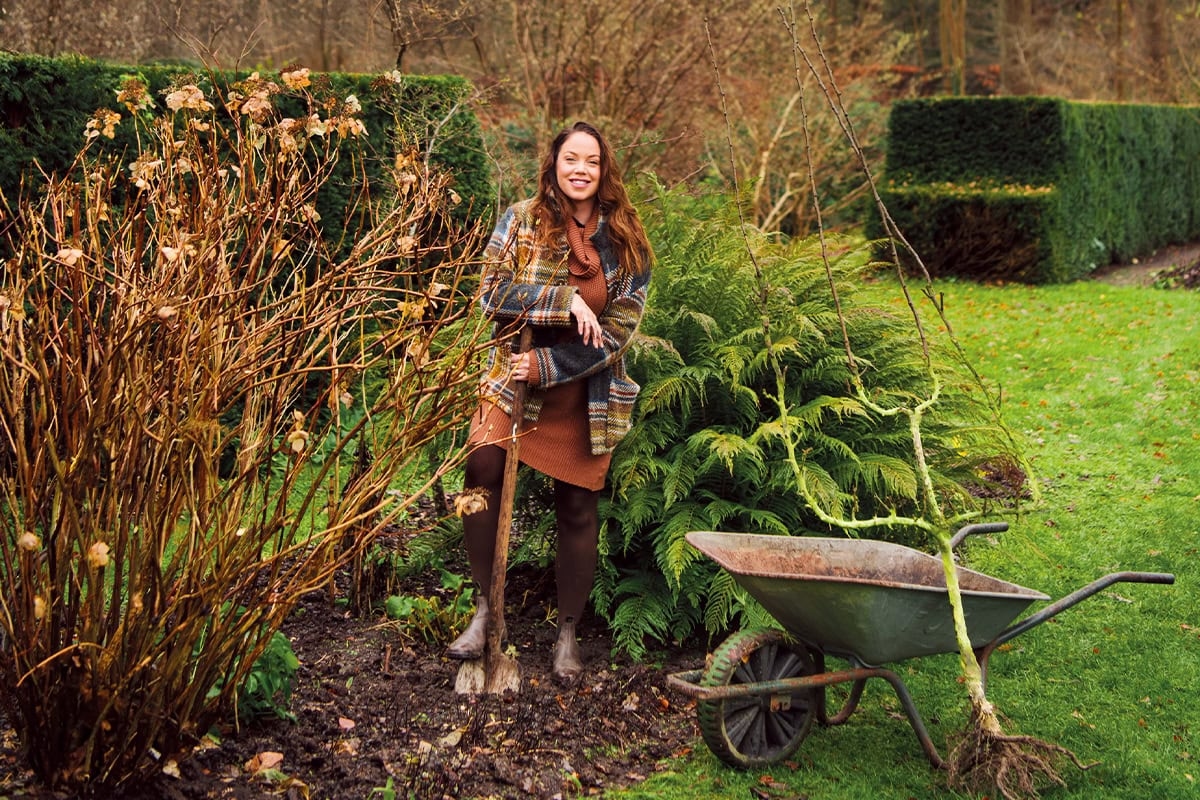Expert tips for trees that also fit in a small garden

Autumn is the perfect time to start planting trees. These conditions are perfect for establishing roots. Our tree dossier will help you get started this month! In the November issue of Gardeners' World magazine, editor-in-chief Anne Wieggers talks with sustainable growers about the best trees for different gardens. Read this section of the tree dossier to learn about the beautiful trees you can plant in a small garden.
Header photo: Liesbeth Disbergen.
Many people find it daunting: planting a tree. But even in a small garden, a tree can be a beautiful addition that doesn't always have to take up a lot of space. Tree nursery Albert Leemreize of Albert Leemreize Nurseries (Ruurlo) recommends four trees that are ideal for a small garden, and Anne shares her favorite small tree.

Albert: "The American cultivar dogwood, Cornus 'Porlock', is sufficiently winter-hardy here. In a slightly sheltered spot, they are almost evergreen. This isn't always possible in rural areas, but in warmer city centers, they are practically evergreen. They offer considerable ornamental value year-round. This small tree has a distinctly upright growth habit and can reach a height of four to a maximum of six meters without pruning. The foliage is a beautiful dark green in summer, a stunning orange-red in autumn, and large pink flowers appear in summer. This is a very healthy cultivar that can withstand heat and drought well."

Albert: "American ornamental apples are beautiful in smaller gardens. The cultivar 'Red Sentinel' is often recommended for small gardens, but they grow quite large and aren't particularly hardy. I would go for varieties like 'Donald Wyman,' 'Royal Raindrops,' or 'White Angel.' They're easy on the soil and are good for biodiversity, thanks to their abundant blooms and ornamental fruits that birds love."
Sign up here for our free newsletter! Every week you'll receive fresh, practical gardening tips and inspiration that you can immediately apply to your garden.

Albert: "This is a profusely flowering tree native to China, popular with beekeepers because so many honeybees can be found on it during the blooming season. As it ages, the bark peels off in lengthwise strips, revealing beautiful, light-colored stripes. It blooms late, often as late as September and October. The flowers are clustered together in large white bunches. After flowering, the calyx expands a bit and then turns a beautiful red, giving the appearance of a second flowering. The cultivar 'Temple of Bloom' stays slightly smaller, blooms a bit longer, and appears to turn a stronger red in the fall."

Albert: "A truly remarkable sight! The white, striking, and fragrant flowers appear on the tree at a young age, especially in the rare dwarf variety 'Little Lesley'. After flowering, the dark blue berries follow, which delight birds. This beautiful little tree has a yellow autumn color."

Anne: "This one little tree makes your entire garden smell like a historic lime tree avenue with ten trees. And it stays so small. I carried this tree up and down my garden until its crown was right in front of my neighbor behind it. Once it was there, it went into the ground, where it has been filling my garden with the wonderful lime tree perfume and the buzz of bees for years now."
Tip! Curious about even more beautiful plants that are ready to go in the ground now? Subscribe to our free newsletter and receive practical tips for your garden every week.

In old walled gardens, you often see them: artfully trained fruit trees. Beautiful shapes have developed over the centuries. This is also called "espalier cultivation," and the end result is "living lacework." From U-shapes to countless fans, circles, and so on, almost anything can be created. The warmth of the walls made it possible to grow all kinds of fruit.
A major advantage of espaliered fruit trees, especially in small gardens, is that they take up virtually no space. They are pruned tightly against a wall, shed, or facade, and not only create a beautiful ambiance but also yield a harvest. With gardens shrinking in the Netherlands and Belgium, this is the (historical) way to grow fruit in the future.

Anne: "Growing fruit in the smallest of spaces is possible with step-over trees. I use them at the edges of a raised bed, where they beautifully frame my vegetables and flowers like a fruity trellis. This not only yields a harvest but also creates a truly beautiful display."

In a smaller garden, you can choose to add a single tree, but you can also create a small wilderness to contribute to your garden's biodiversity. For example, Sprinklr offers the "Tuiny Forest" package: a ready-made 6-meter-long forest with native trees, shrubs, and seeds.
Liedewij Loorbach, one of the founders of the sustainable plant shop, explains how this mini-wilderness works: "Using a Japanese planting method, the species are planted close together, which results in rapid growth and improved soil quality. This creates a mini-wilderness within two years. You immediately have a significant impact on birds, hedgehogs, and insects!"
In our free weekly newsletter, you'll find practical, sustainable gardening tips and inspiration you can start using right now. Join us in the garden and sign up here!
gardenersworldmagazine



%3Aformat(jpeg)%3Abackground_color(fff)%2Fhttps%253A%252F%252Fwww.metronieuws.nl%252Fwp-content%252Fuploads%252F2025%252F10%252FZuid-Tirol-Dolomieten-2.jpg&w=3840&q=100)

%3Aformat(jpeg)%3Abackground_color(fff)%2Fhttps%253A%252F%252Fwww.metronieuws.nl%252Fwp-content%252Fuploads%252F2025%252F11%252Fpexels-olly-842912.jpg&w=3840&q=100)